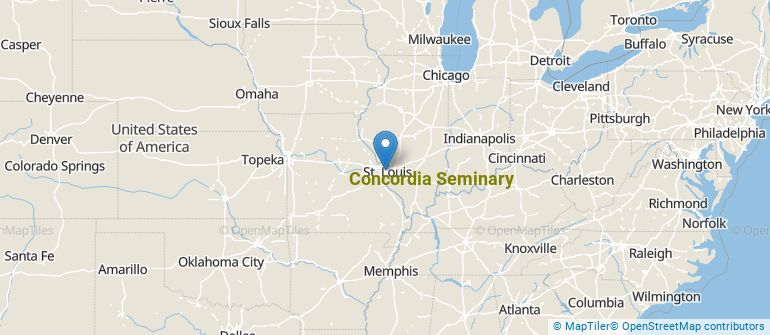 by our College Data Analytics Team
by our College Data Analytics TeamExplore the best ranked schools for the programs you are most interested in.
Concordia Seminary was not ranked in College Factual's Best Overall Colleges report this year. This may be because not enough data was available.
Data for the student to faculty ratio for this school has not been reported.
In addition to the student to faculty ratio, some people look at what percentage of faculty members are full-time as a sign of how much time professors will be able to spend with their students. This is because part-time teachers may not be be on campus as much as their full-time counterparts.
The full-time faculty percentage at Concordia Seminary is 100%. This is higher than the national average of 47%.
The student loan default rate at Concordia Seminary is 2.0%. This is significantly lower than the national default rate of 10.1%, which is a good sign that you'll be able to pay back your student loans.
Get more details about the location of Concordia Seminary.

Contact details for Concordia Seminary are given below.
| Contact Details | |
|---|---|
| Address: | 801 Seminary Place, Saint Louis, MO 63105-3196 |
| Phone: | 314-505-7000 |
| Website: | https://www.csl.edu/ |
| Most Popular Majors | Bachelor’s Degrees | Average Salary of Graduates |
|---|---|---|
| Theological & Ministerial Studies | 119 | NA |
Online learning options are becoming more and more popular at American colleges and universities. Online classes are great for students who have busy schedules or for those who just want to study on their own time.
In 2022-2023, 214 students took at least one online class at Concordia Seminary. This is an increase from the 202 students who took online classes the previous year.
| Year | Took at Least One Online Class | Took All Classes Online |
|---|---|---|
| 2022-2023 | 214 | 214 |
| 2021-2022 | 202 | 202 |
| 2020-2021 | 166 | 166 |
| 2018-2019 | 145 | 145 |
Footnotes
*The racial-ethnic minorities count is calculated by taking the total number of students and subtracting white students, international students, and students whose race/ethnicity was unknown. This number is then divided by the total number of students at the school to obtain the racial-ethnic minorities percentage.
References
More about our data sources and methodologies.